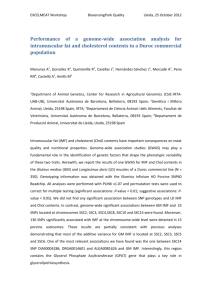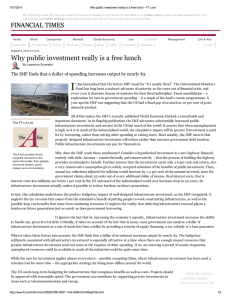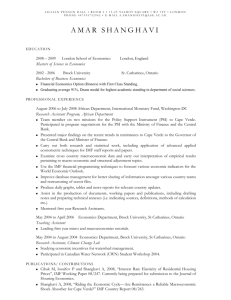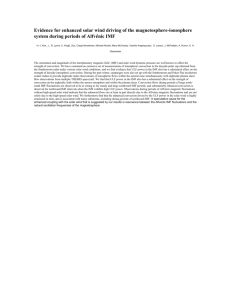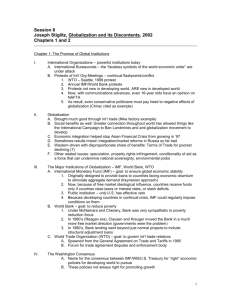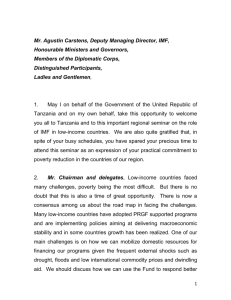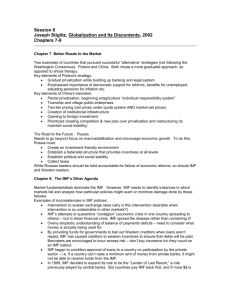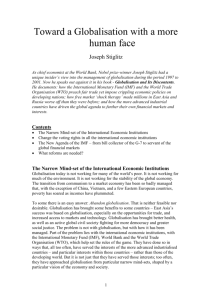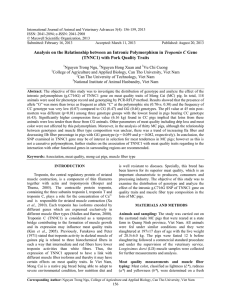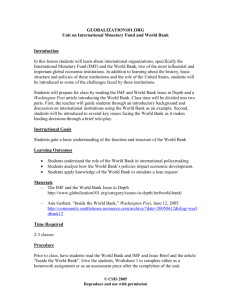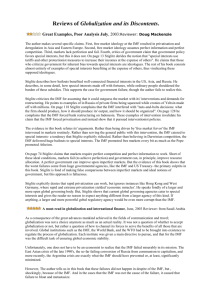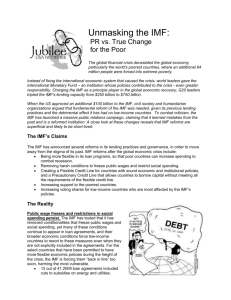Evolution of intramuscular fat content in three pig genotypes from 30
advertisement
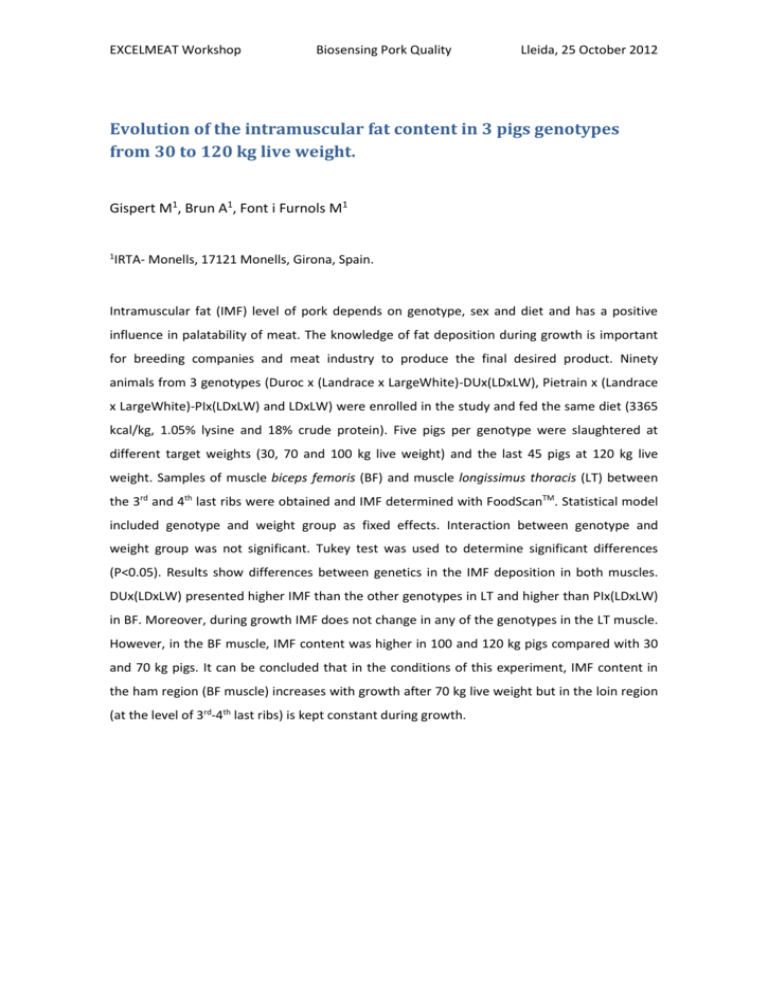
EXCELMEAT Workshop Biosensing Pork Quality Lleida, 25 October 2012 Evolution of the intramuscular fat content in 3 pigs genotypes from 30 to 120 kg live weight. Gispert M1, Brun A1, Font i Furnols M1 1 IRTA- Monells, 17121 Monells, Girona, Spain. Intramuscular fat (IMF) level of pork depends on genotype, sex and diet and has a positive influence in palatability of meat. The knowledge of fat deposition during growth is important for breeding companies and meat industry to produce the final desired product. Ninety animals from 3 genotypes (Duroc x (Landrace x LargeWhite)-DUx(LDxLW), Pietrain x (Landrace x LargeWhite)-PIx(LDxLW) and LDxLW) were enrolled in the study and fed the same diet (3365 kcal/kg, 1.05% lysine and 18% crude protein). Five pigs per genotype were slaughtered at different target weights (30, 70 and 100 kg live weight) and the last 45 pigs at 120 kg live weight. Samples of muscle biceps femoris (BF) and muscle longissimus thoracis (LT) between the 3rd and 4th last ribs were obtained and IMF determined with FoodScanTM. Statistical model included genotype and weight group as fixed effects. Interaction between genotype and weight group was not significant. Tukey test was used to determine significant differences (P<0.05). Results show differences between genetics in the IMF deposition in both muscles. DUx(LDxLW) presented higher IMF than the other genotypes in LT and higher than PIx(LDxLW) in BF. Moreover, during growth IMF does not change in any of the genotypes in the LT muscle. However, in the BF muscle, IMF content was higher in 100 and 120 kg pigs compared with 30 and 70 kg pigs. It can be concluded that in the conditions of this experiment, IMF content in the ham region (BF muscle) increases with growth after 70 kg live weight but in the loin region (at the level of 3rd-4th last ribs) is kept constant during growth.






